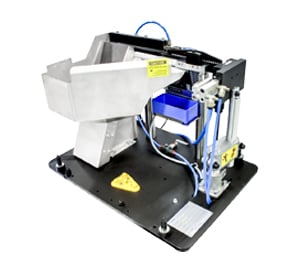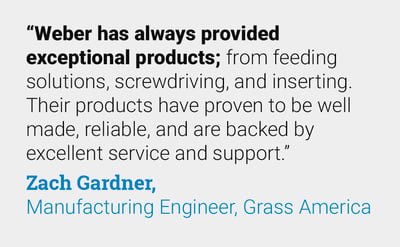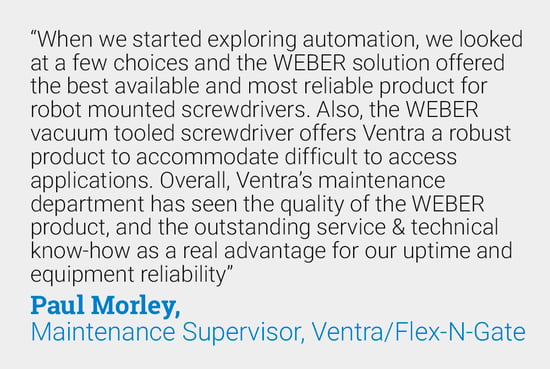3 min read
Automating Screw & Joining Operations for Tractor Trailer Assembly: Frame, Body and Interior Assembly
By: Michael Rabasco Oct 16, 2024 8:30:00 AM
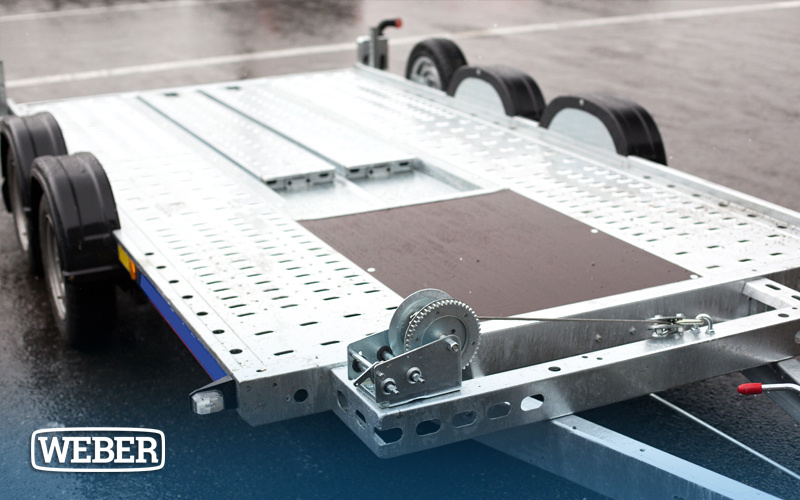
Whether you're building semi-trailers, flatbed freight or transport trailers, WEBER automation can make your trailer manufacturing production processes more efficient and profitable.
Automating the feeding and screwing or joining operations will increase your production capacity and uptime, produce consistent quality products, and reduce scrap from inefficient processes and human error.
Automated tools have sensors that help you achieve the highest level of precision when automating screw and joining operations. They ensure that screws and fasteners are fitted accurately and tightened all the way. Floor data is captured directly from the equipment, and no operator input is necessary.
As you know, building trailers is repetitive, hard labor. Automation will free your employees from high-risk tasks. Whatever your reasons for considering automation, WEBER can bring solutions to the table.

Trailer Frame Automation
Trailer manufacturing tends to require a high volume of screws and fasteners to assemble the chassis, floors, rails, cross members, axles, landing leg assemblies, coupler plates, and all other structural elements of a trailer.
WEBER has an array of handheld screwdrivers like our pneumatic HSP, fixed systems, inserting systems, feeding systems, and inserting solutions that can assist in all these areas. Even in low-volume, high-mix assembly operations, WEBER has solutions to help you automate these processes with quick tool changes that solve any assembly challenge.
Trailer Body Automation
 Hundreds of rivets are required to assemble a trailer body, which is a difficult and time-consuming chore. Whether you're attaching the front corner posts, the aluminum side panels, or flooring WEBER automation is much quicker and much more accurate than having operators hand-feeding rivets and bolts. For example, WEBER helps by providing:
Hundreds of rivets are required to assemble a trailer body, which is a difficult and time-consuming chore. Whether you're attaching the front corner posts, the aluminum side panels, or flooring WEBER automation is much quicker and much more accurate than having operators hand-feeding rivets and bolts. For example, WEBER helps by providing:
- High force, high-speed screwdriving to install or fasten truck flooring to chassis which is far quicker, more efficient, and safer than manual operations. We are also able to cut scrap rates significantly with our solutions.
- Insertion system: high-speed and flexible feeding systems with rivet length detection. Checkout our Step Feeder ZEL with Integrated sensors to ensure high process reliability.
- high-speed insertion units with depth verification
- C30S control solutions, combined with feeder and rivet length detection, will ensure that the right rivets are inserted and fit correctly.
Trailer Interior Automation
Trailer assembly includes installing plywood on the interior side posts, as well as installing doors, door hardware, and lock rods. Most trailers also have a riveted aluminum or translucent fiberglass plastic roof as standard equipment. This comes with it’s own set of screwdriving and feeding obstacles to consider.
Automation can be added to your interior assembly, including handheld pneumatic screwdrivers or high-speed, high-force drivers with analog depth sensors, to fully automate the back-breaking task of attaching the wood floors to the chassis.
Quality Control
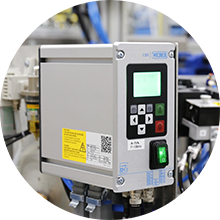 In addition to employee safety and saving time, quality control is an integral part of any manufacturing arena, and with quality control comes waste reduction. The C30S can handle all quality control issues and eliminate human errors by controlling the angle, depth, and torque on all screws, rivets, and bolts.
In addition to employee safety and saving time, quality control is an integral part of any manufacturing arena, and with quality control comes waste reduction. The C30S can handle all quality control issues and eliminate human errors by controlling the angle, depth, and torque on all screws, rivets, and bolts.
You will find that any automation you add will also reduce your labor costs. Machines don't require sick time, downtime, break time, or vacation time and by shifting these lower-skilled tasks will allow these employees to take on more skilled labor processes.
Since 1956, WEBER has designed and built solutions for the demanding applications in the assembly business. Call us to find out exactly what automation and WEBER can do for your tractor-trailer manufacturing operation.


